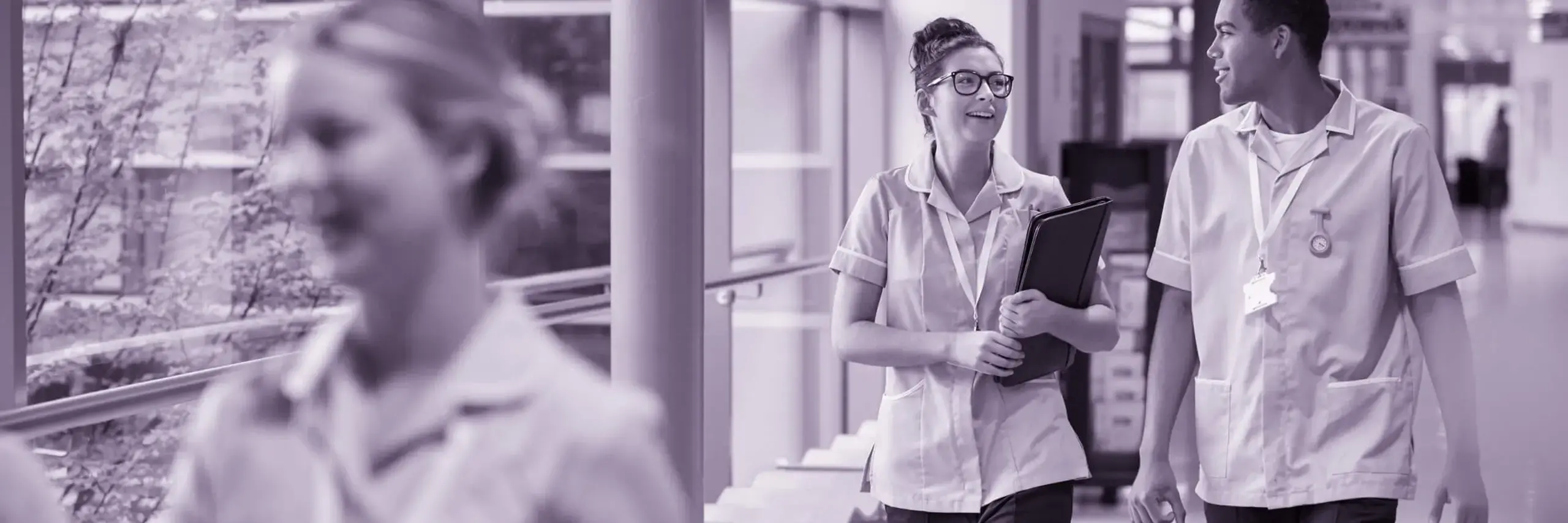Main content
Safety nets and sledgehammers
01 May 2024
In March 2024, the PSA convened a roundtable discussion entitled ‘Accountability, fear and public safety’ to explore some of the recent NHS safety culture initiatives in England and their relationship with professional health regulation. Representatives from patient advocacy groups, NHS organisations and regulators took part. We began to explore how to bring the best of safety culture initiatives and the best of regulatory processes together to do more for patient safety. It was a wide-ranging discussion, with some predictable recurring themes.
Not all safety culture initiatives are the same. But all, whether it’s the Health Service Safety Investigations Body (HSSIB), NHSE’s Patient Safety Incident Response Framework (PSIRF), or Mersey Care’s just culture have a number of things in common. The first is a focus on learning from errors and understanding and acting with a focus on system failures rather than individual failures in order to make improvements. The second are myths and misunderstandings about what safety culture initiatives do. For example, much of the focus on HSSIB has been on the misperception that the intention is to exclude patients and families from all its investigations. Other misperceptions are that HSSIB can investigate serious misconduct, and that it prevents other investigations from occurring at the same time. Similarly, PSIRF, with its intent to focus on learning and compassionate engagement with all parties, has been misunderstood as a ‘less robust’ process than its predecessor, the Serious Incident Reporting Framework. We also heard from Mersey Care that just culture is often misunderstood as ‘zero blame’ culture, rather than an approach which seeks to balance safety, accountability, learning and fairness into one, building ‘safety from below’ rather than imposed from above. In short, ‘just culture’ does not equate with ‘zero blame’. There will often be individuals who must be held to account. But if staff feel safe, they will be inclined to be ‘candourous’ too.
Evidence from the Parliamentary Health Service Ombudsman (PHSO) and NHS Resolution suggested that, in many places, professionals do not feel safe or free to speak up or raise concerns. There was consensus that the most risky workplaces are often ‘anxiety spaces’ – characterised by high accountability and low levels of psychological safety. These workplaces tend to have low staff retention rates and poorer outcomes for patients.
All participants agreed with Action against Medical Accidents (AvMA) on what patients want – acknowledgement, apology (meaningful), accountability, action (learning so it doesn’t happen again), and access to justice (to put right the harm that has happened). Equally, AvMA said, accountability is not just about the individual, it is about systems, processes, leaders, management and governance. Sands (a charity saving babies’ lives and supporting bereaved families) pointed to the high levels of frustration when families see no change, and the same issues recur time and again. Patients and families want to be involved in the learning and to know their voice is valued and listened to.
Regulators at the roundtable welcomed the emphasis on patient involvement, alongside the focus on learning. They too pointed to misconceptions and misunderstanding of what regulators do. Fitness to practise should be one part of the safety system, but only a small part for a small number of individuals.
Common myths and misunderstandings: healthcare, safety cultures & regulation
- Just culture means zero blame and no accountability
- Regulation is ‘out to get’ health care practitioners
- Accountability always leads to sanction
- Accountability is only about people, not about systems, places and processes
- Health practitioners will lose their registration if investigated
- Healthcare comes without risk
If nothing else, this roundtable highlighted the complexities involved in delivering a safe, accountable system of health care. The pull of a just culture, towards learning and openness, against the push of regulation, which appears to want to hold individuals to account for mistakes and errors, seems irreconcilable. So where does this take us?
In essence all these new, and not so new (Dekker, 2012) safety culture initiatives are about creating a learning environment in which all parties are involved, respected, seen as equals, with a view to restoring and re-building what is broken. They tie in with the principles of speaking up, increasing cultural competence and striving for equality and diversity. These are all hugely important building blocks of better healthcare.
And here lies the contrast. Alongside this we have built a system of individual redress in UK health professional regulation that is adversarial for all parties. Regulating ‘in the public interest’ can engender the very thing that is toxic to learning and health care safety and improvement – fear, some would say terror, even (Berwick, 2013). Adversarial approaches by definition precipitate defensiveness, and defensiveness supresses learning. To add to the complexity, regulatory decisions that result in practitioner suspensions where there is no obvious risk to patients (GMC versus Arora) invite criticism and dismay in a regulatory process that seems out of step not only with the ambitions of safety cultures, workforce pressures and the enormous stresses of our post pandemic health care environments.
What is not talked about to any great extent with the public or health practitioners is that professionals in health care don’t turn up to work to do a bad job. Bad things happen. Some elements of health care are risky. There will be system failures and human error. Risk is inherent in healthcare, and this acceptance is essential to tackling patient safety issues – to allow both the organisation, and the staff involved to learn from mistakes.
The fear of regulatory action, even when it is not likely to occur, can have negative consequences for individuals, their colleagues. It can also run counter to maintaining a healthy organisational culture. The majority of failures are system failures that involve humans, not human failures that involve systems. The sharp end of regulation therefore should be reserved for the latter, and just culture approaches, which use a restorative response to harm and involve patients and families, for the former.
This roundtable discussion suggests that health professional regulation needs to be refined, re-purposed and refocused to go with the grain of improvement, compassion, restoration and learning. Regulators need to open the door to just cultures becoming the norm in health care whilst keeping the safety of patients and families paramount. Health professional regulators could do more through their communication and engagement to address regulatory myths, for example that referral to the regulator will inevitably lead to a sanction, or that regulators will, by default, blame individuals for system failures. Sharing data and insights, being clearer about expectations and outcomes of complaints, referencing safety cultures in standards and education and training, in short, using the evidence in more proactive ways to help with this. Perhaps most urgent is thinking about how to address the fear factor in fitness to practise processes, which contributes to distress, damage and in rare and tragic instances, the untimely death of practitioners.
Doing the best for patients, in a just culture environment, means early resolution and engagement with patients and families as soon as possible after an event, learning from errors. It does not equate to zero blame, however. Successful safety culture initiatives are mindful of the need to maintain accountability, and the cloak of anonymity should not be necessary in a strong just culture in which people feel able to speak candidly about mistakes.
In the very rare cases of deliberate harm, intent to deceive, boundary violations and exploitation of power, individual accountability and swift regulatory action will always be required.
What do we hear time and again from patients? They want to be listened to, they want transparency, involvement, shared learning and no-one experiencing the harm again. In rare instances, they seek punishment. Health care, like every other human service, needs strong safety nets to protect patients from poor care, deliberate harm. These are the finely crafted and co-designed standards on education, ongoing learning, competence and conduct. But these are not enough. For health care to thrive, we need a seedbed of trust. And for trust to thrive we need a workforce to feel safe at work, free to be honest when things go wrong, not to be blamed for system failures. Just culture environments have been shown to deliver positives – not only trust and learning, but also, crucially, better professional wellbeing, better patient outcomes and safer environments. If regulation is to stay relevant and respected it must go with this grain, and not against it.
There is more work to be done to bring the best of safety culture initiatives and the best of regulatory processes together to do more for patient safety.
Anna van der Gaag | Visiting Professor, Ethics and Regulation, University of Surrey
Acknowledgements
I would like to thank all those who attended the roundtable from AvMa, Sands, NHSE, NHS Resolution, HSSIB, Mersey Care, PHSO, GPhC, GOsC, HCPC, NMC, GMC and Dinah Godfree, Alan Clamp and colleagues from PSA in attendance.



